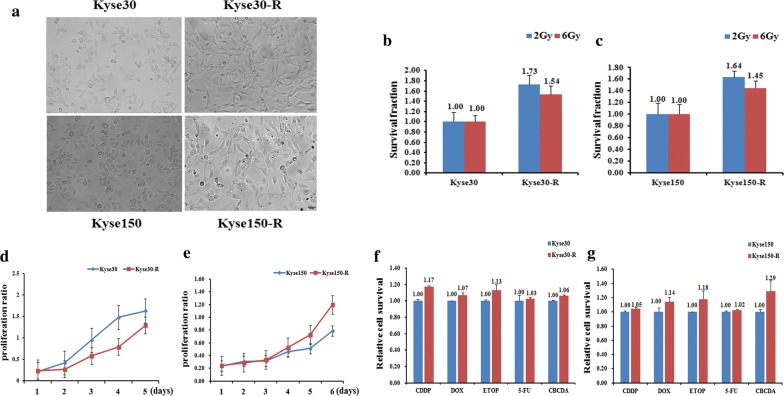Fig. 1.
Establishment, identification and biological characteristics of radiotherapy resistant strains of esophageal cancer cells. a Cell morphology identification. Kyse30-R and Kyse150-R cell lines were established from Kyse30 and Kyse150, respectively. The cumulative dose of radiation of Kyse30-R and Kyse150-R reached to 70 and 82 Gy, respectively. Under the optical microscope, the morphology of the cell line was obviously changed. Most of the cell lines were long spindle shaped and protruding, and the cell space was enlarged and the parental cells were mostly oval and cobblestone, and the cells were closely connected. b, c Radiosensitivity detection assay showed that the sensitivity of Kyse150-R and Kyse30-R cells was lower than that of parental cells. d, e Cell proliferation assay showed that the proliferation of Kyse30-R cells was slower than that of parental cells, however, the proliferation activity of Kyse150-R cells was stronger than that of parental cells. f, g Chemosensitivity and resistance assay showed that Kyse150-R and Kyse30-R cells were drug resistance than that of their parental cells

